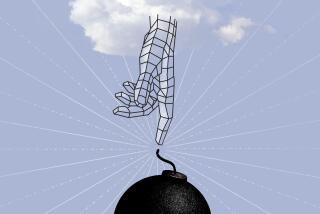Gates 2.0: Ever get the feeling technology...
Gates 2.0: Ever get the feeling technology moves so fast you can’t get a fix on where its headed? Well, don’t worry. Even techno-laureate Bill Gates has had his periods of foggy vision.
The Microsoft chairman’s reading of the future, “The Road Ahead,” was a blockbuster when it came out last November, selling more than 1 million copies. But as Penguin comes out this week with the new paperback edition, more than a third of the book has been revised, mostly to account for changes in Gates’ outlook.
The new edition, call it version 2.0, sells for $15.95 and comes with a much-improved CD-ROM version of the book. If you’re looking for a primer on the buzz of technological babble out there, this book does a solid job.
Of course, all those revisions might make you wonder whether it’s even worth reading a book that tries to predict the future course of technology. Just two weeks after the book appeared last year, Microsoft called a group of reporters and analysts together to change the company’s strategic direction to account for the rapidly emerging phenomenon of the Web.
The first edition still offers some hope for the emergence of interactive television. Version 2.0 is far more pessimistic and predicts that interactive TV, when it is finally available, will be an extension of the Internet.
There’s also a vastly expanded section on Net appliances we’ll supposedly use to find and organize information, from TVs to wallet PCs.
Gates insists the book’s vision is the same--it’s just the particular path to get there that’s changed. Although the new book still focuses on “how the patterns of our lives are being revolutionized by pervasive computing and communications,” Gates says in a statement, “the book now puts the revolution almost entirely in the context of the Internet.”
If Gates seemed to have a Pollyanna view of the future of technology in his first book, the revised edition is even more optimistic. (Although he also adds more qualifiers at the end.) In his chapter on education, for example, he quotes a statistic suggesting it would add only 3% to the cost of education to provide students with “adequate hardware” and gushes with the promise of computers to make learning fun.
“If the computer knows the student likes historical fiction, war stories, folk music or sports, it will use the knowledge to make [studying] more interesting,” Gates writes.
He also goes into greater depth about his ambitious plans for the house he’s building at a cost of more than $40 million. For the voyeur, there’s a CD-ROM that includes a computer graphics tour of the house.






